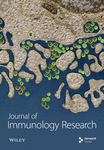The Possible Role of Natural Idiotopes in Immune Memory
Abstract
In this paper we report on the generation of Abs possessing specificities similar to those of Abs used in immunization, and on the generation of Id and anti-Id specificities in the sera of mice immunized with commensal bacterial antigens.
The human monoclonal antibody IgM DJ (VH3/VL2) expresses natural antibody properties, natural idiotope (Y7), and specificity towards Lactic acid bacteria (LAB). When used in immunization it generates LAB-specific antibodies. Immunization with LAB, as detected in the presence of biotin-labelled mouse monoclonal anti-idiotopic antibodies Y7 and IgM DJ generates Abs1 and Abs2, respectively. These findings may imply that the recognition of bacterial motifs accords with the rules of idiotypic network theory. This theory, first proposed by Jerne in 1974 and often overlooked since, has been subject to change during the course of immunological research. Recent experiments concerning the recognition of bacterial motifs and natural memory in the immune system have inspired us in our attempt at explaining the possible role of natural Id in immune memory.




